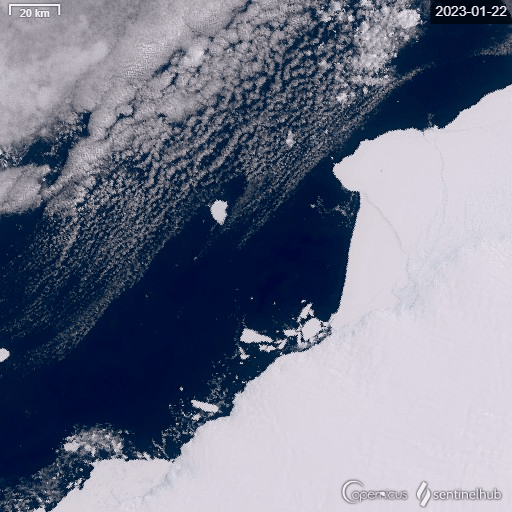An iceberg the size of London broke away from Antarctica
An iceberg broke off from the Brunt Ice Shelf in Antarctica right next to the Halley Research Station. Its size is compared to London - it has an area of about 1,500 square kilometers. This is another major glacier calving in the region in the last few years. However, unlike recent changes observed in Antarctica, the detachment of a compact block of ice is not related to climate warming. According to British Antarctic Survey glaciologists who are conducting research in the area, the glacier calving event is part of the natural behavior of the Brunt Ice Shelf.
This fragment of the glacier has been monitored since 2012, when scientists noticed the first serious cracks on its surface. They suspected that a significant fragment would break off in the coming years, which happened at the end of January 2023.
The constellation of satellites of the Copernicus program: Sentinel-1 and Sentinel-3 of the European Space Agency (ESA) is responsible for the possibility of observing the block of ice before and after breaking away from the main massif.
The key advantage of radar imaging, represented by Sentinel-1, is the ability to image in any weather or lighting conditions, and thus also at night and in full cloud cover. The usefulness of this feature is revealed, for example, in ocean monitoring. Ships, icebergs or the extent of the ice cover are clearly visible on them.
Sentinel-3, on the other hand, is one of the most advanced satellite systems, with four imaging instruments on board.
The images used in this analysis come from the OLCI - Ocean and Land Color Instrument. It images the Earth in 21 spectral channels, registering electromagnetic waves with a length of 400 to 1020 nm. The spatial resolution of the images obtained in this way is 300 meters, and the width of the data collection path is 1270 km. The device is used to monitor the oceans, in particular marine biological activity and marine pollution, the condition of vegetation (including crops) and to observe the composition of the atmosphere, as well as the movements of glaciers.

